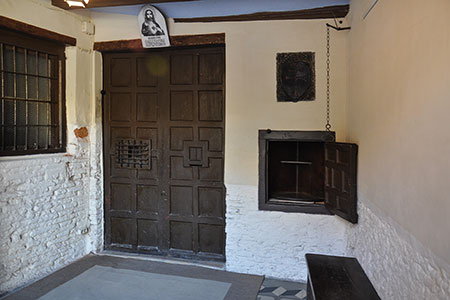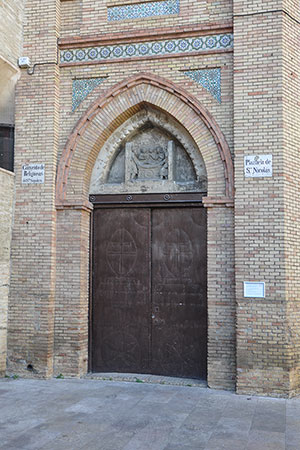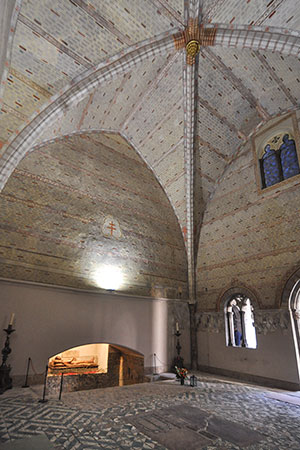Monastery of Santo Sepulcro de Zaragoza
Monastery of Resurrección / Santa María de Híjar / Ixar / San Nicolás
(Zaragoza, Zaragoza)
The female monastery of the Santo Sepulcro was founded in Zaragoza by Marquesa Gil de Rada, who in 1300 had been widowed by Pedro Fernández de Híjar, the illegitimate son of Jaume I. That same year she joined the Order of the Holy Sepulchre as a canoness, and at the same time decided to establish a monastery in Híjar (Teruel). To this end, she donated goods and income for its subsistence.
The foundress, Marquesa, died in 1304 at a time when the possibility of transferring the small community from Híjar to Zaragoza was already being considered. In the middle of the same year, houses were already acquired in the city and established, in 1306 the foundation was made official and by 1310 it was fully operational, and more space had been acquired to build the monastery. Marquesa would be buried in Zaragoza. The house was linked to that of the Santo Sepulcro in Calatayud. During the 14th century, important construction work was carried out on the monastery, thanks to the patronage of Friar Martín de Alpartir, canon of the house of Calatayud. In 1361 they were given the church and parish of San Nicolás, which still belongs to the monastery. At the end of the 14th century, Jaume Serra worked on the altarpiece of the Resurrection, now preserved in the Museum of Zaragoza.
The house suffered tensions and confrontations with the archbishop due to the provisions adopted at the Council of Trent regarding the enclosure, which was finally accepted by the community in 1576. The monastery had been built next to the old Roman wall, of which important remains are still preserved. Much of the complex were built during the 14th century, although with the passing of time it underwent modifications and restorations. The effects of the Peninsular War were particularly serious, when the community had to flee and could not return until 1813, finding the place badly damaged. At the end of the 19th century, part of the convent had to be rebuilt due to collapse and a new façade was erected. The monastery is still active on the same site.
- LÓPEZ DE LA PLAZA, Gloria (2020). Las mujeres en una orden canonical, las religiosas del Santo Sepulcro de Zaragoza (1300-1615). Tesi doctoral: Universidad Complutense de Madrid
- LÓPEZ RAJADEL, Fernando (1996). La fundación del monasterio del Santo Sepulcro en Zaragoza. II Jornadas de estudio. Saragossa: C. E. Santo Sepulcro
- RINCÓN, Wifredo (1982). La orden del Santo Sepulcro en Aragón. Saragossa: Guara Ed.
- RINCÓN, Wifredo (2010). El Monasterio de la Resurrección de Zaragoza. Saragossa: C. E. Santo Sepulcro






















